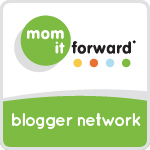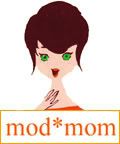.jpg)
In the world of interactive, read-along systems, there's a new kid on the block: The Poingo. A product of Publications International, creators of the popular StoryReader preschool books, the pen-shaped Poingo works with Poingo's specially-designed books and brings them to "life". When kids touch the text on the books, the Poingo reads the story out loud, complete with music and sound effects. When they point to pictures, they get music, funny phrases, and other fun sounds. We recently got a chance to test the Poingo, and the vote is unanimous: it's a great toy. My kids love going back and discovering all the "treasures" on each page. I love how it gives me a break from reading out loud from time to time.
Comparisons with the Leapfrog Tag are inevitable, so let's get it over with. Here are the results of the Tag-Poingo smackdown:
Features (winner: Tag)
Features are very similar. Even their selection of books is very similar, with lots of popular kids titles from the Disney line (Poingo, being newer, has less available, but more are on the way). The biggest difference is that kids can use the Tag reader to read individual words to them, while the Poingo reader can only read the entire page of words. So while both brands foster the love of reading by making stories interactive and fun, the Tag also (i.e. kids can try to read individual words on their own and use the Tag to see if they've read it correctly). And the Tag connects to the Leapfrog Learning Path, which lets parents keep track of what their child is doing with the product when they're not looking.
Ease of use (winner: Poingo)
Both systems are pretty straightforward -- just point the reader at the words and it "reads" out loud. So they're both easy to use -- as far as the kids are concerned. The difference lies in the grownups' involvement. Both require parents to download the audio files for the books into their respective readers. But the Poingo has space for 50 different books (versus about 6 for the Tag), which means you can build up a good-sized library without having to constantly move titles on and off the reader.
Price (winner: Poingo)
This is another big plus for the Poingo; it's way more affordable. For $34.99 you get the electronic reader and two hardbound books; additional books are $9.99. The Tag costs $49.99 for the reader and one paperback book; additional books are $13.99.
Age range (it's a tie)
Poingo says it's suited for ages 3 thru 7, Tag says 4 thru 8, which is consistent with my own opinion: the content, physical size and font size of the Poingo books suggest that they are targeted to a younger audience than the Tag. And while the entertainment value is no age limit (hey, even I like having a story read to me), I would argue that the educational benefits for either of these brands don't really apply to kids 6 and up.

And the overall winner? Hmmmm..... I'll let you decide. Is budget a concern? Go for the Poingo. Do you hate messing with downloads? Again, the Poingo is better. Are you looking for more learning features? Go with the Tag. With either product, your child ends up a winner.






















1 Comments, Leave yours here:
I'll go with the Poingo!!! I think for what it does and the time span it will be used it is fine. My only draw back is the limited library, but I too think that will grow in time. Also I don't have a child, but I have a 4 year old nephew and 5 year old niece that I think this will be perfect for.
Thank you,
src1964
Post a Comment